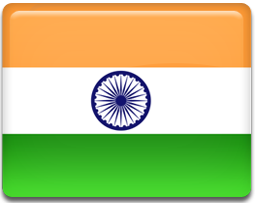
- Helplines:
- + 91-83-5599-2000 |
- 83-5599-3000 |
- Mail:
- travel@pthmail.com
Rajasthan Festivals are a symbol of the vivacious spirit of the people of the state. Numerous festivals fill up this dull state with bright colors. Living in the harsh and rough weather, the people of this dry and parched land find an outlet from their dreary lives in the form of the festivals of Rajasthan in India. They creat the most of the few reasons they get to rejoice in life. So, they celebrate festivals for each or every cause, be it religious occasion or a change of season or ripening of a harvest in Rajasthan.
Festivals in Rajasthan, India are celebrated with great pomp and show. Right from Hindu festivals to sikh festivals, all are celebrated with equal enthusiasm. Folk music and dance is a feature of almost every festival in Rajasthan. The romance, chivalry, etc of the royal bygone era comes back to life through these festivals. Even the tourist department of Rajasthan keeps on introducing new festivals to display and exhibit the rich tradition of the state.
ELEPHANT FESTIVAL
The Elephant Festival of Rajasthan is a different event held annually in the capital of the north Indian state of Rajasthan. Held during Holy, the festival of colors, to herald the advent of Spring, the Jaipur Chaugan or polo field is brought alive with elephants, dancers, musicians and onlookers from all the globe. Groomed to perfection, glittering in gold, row upon row of elephants catwalk before an enthralled audience. The elephants move gracefully in procession, run races, play the regal game of polo.
The echoing sound of the bankiya fills the atmosphere. A ceremonial procession is recreated with caparisoned elephants, lancers on horses, chariots, camels, cannons, and palanquins. The very special large beast is the center of attraction in the many races and beauty pageants.
Strangely, most of the participants are female elephants. The mahouts take great care to decorate the elephants - painting their trunks, foreheads and feet with floral motifs and adorning them from tusk to tail with interesting trinkets. The mahouts were employed in the Phil Khana, the department of elephant in the royal administration. They played an important role until the princely state was incorporated into the Union and the department because redundant. They, however, have continued their association with the elephants.
The game of polo forms the highlight of the Elephant Festival of Jaipur. Dressed in saffron and red turbans, the teams try to score goals with long sticks and a plastic football. Finally, the tourists are invited to mount the elephants and play Holy. Participants dance with great vigor-the excitement rising to a crescendo.
The Elephant Festival is the specialty of the state of Rajasthan in India. Like the Desert Festival of Jaisalmer, the Elephant Festival of Jaipur has become a major draw for the tourists during their travel and tour. Given the importance of the elephant in the social cultural milieu of the state of Rajasthan, tourists can rest assured that they are in for some great Indian festivities and fun in Jaipur.
CAMEL FESTIVAL
Rajasthan organizes the Camel Festival in Bikaner every year in Rajasthan. The festival takes places in the month of January in every year. Rajasthan Camel festival is basically dedicated to Camel, the ship of the desert. This is held in the city of Bikaner with the massive and magnificent Junagarh Fort serving as the background. The camels, dancing to the tunes of their owners and trainers attract hoards of tourists to this festival every year.
Camel is regarded to be of much importance in the desert state of Rajasthan, India And the worth of the camels is reflected in the way a proud breeder dresses up and displays his camels. A colorful procession of ornamented and decorated Camels marks the opening of the Camel Festival of Bikaner, Rajasthan in India. With the advancement of the festival celebrations, follow the other attractions of the Camel Festival includes the best breed competition, the tug-of-war contest, camel dance, acrobatics, etc.
The efforts and the hard work of the trainer visit in the way camels dance to his tunes and directions, displaying amazing footwork. The camels ornamented with bridles, bejeweled necks, jingling anklets and casting long, lanky shadows on the sand mesmerize the onlookers. In the evening, superb artists and folk dancers enchant you with their performance and charisma. Dancing with their skirt whirling in the sky, they present a figure of euphoria. Along with that, the fire dancers balancing burning lamps on their foreheads while dancing, leave you speechless.
GANESH CHATURTHI FESTIVAL
Ganesh Chaturthi marks the birth of Lord Ganesha and is celebrated all over Rajasthsn in India. In Sawai Madhopur, the festival is rather very special. The temple dedicated to Lord Ganesha is located in the fort of Ranthambore, about 13 km from Sawai Madhopur and this is one of the very most important Ganesha temples in the Rajasthan State.
There is always a lot of activity at the temple because people believe that the first invitation to a marriage should be sent to Lord Ganesha. As a result, hundreds of invitations pour in everyday from all over the country inviting Lord Ganesha to attend the marriage. Some people too enclose money to enable Lord Ganesha to pay for his fare!
This temple is the site for Ganesh Chaturthi celebrations attracting devotees from all over to join in the singing of devotional songs. Markets spring up in the area, allowing the people to do their shopping as well.
SHEEKHAWATI FESTIVAL
The Shekhawati Festival held on I0th and 11th February each year is organized jointly by the State Department of Tourism, District administration of Sikar, Jhunjhunu and Churu.
Shekhawati, already popular for its frescoes, is fast becoming a rural tourism destination also. Traveling on horse back, the tourists fine a closer view of the countryside and the people. And they return with an indelible imprint of not only the friendliness of the people but also of the agricultural revolution sweeping the villages -- the region now exports 80 per cent of its crops whereas only a few years ago, it could meet only 10 per cent of its requirement through local production.
For a broad-based discovery of Shekhawati's culture, the festival is spread over a number of venues - Nawalgarh, Sikar, Jhunjhunu and Churu. The programmers including a one day tour of the region, camel and jeep safaris, farm visits, rural games, cultural programmers, havelis competitions and fireworks etc.
The driving force behind this festival has pioneered integrated rural development since 1993 and has identified tourism as a thrust area for creation of employment opportunities. The festival and other efforts of the foundation have convinced the haveli owners of the need.
TEEJ FESTIVAL
Teej is the festival of swings. This marks the advent of the monsoon month of August in every year.
The monsoon rains fall on the parched land and the pleasing scent of the wet soil rises into the air.
Swings are hung from trees and decorated with flowers within tree.
Young girls and women dressed in green clothes sing songs in celebration of the advent of the monsoon on teej festival.
This festival is dedicated to the Goddess Parvati, commemorating her union with Lord Shiva. Goddess Parvati is worshipped by seekers of conjugal bliss and happiness.
An elaborate procession is taken out in Jaipur in Rajasthan for two consecutive days on the festive occasion which is watched by people in large numbers.
The teej idol is richly decorated with ornaments and gaudy dresses. The Teej idol is covered with a canopy whereas the Gangaur idol is open.
MARWARS FESTIVAL
Marwar Festival is held annually in the memory of the heroes of Rajasthan in India. Formerly known as the 'Maand Festival', Marwar Festival showcases the art and culture of Rajasthan and is devoted totally to songs and dance of the Marwar region. 'Maand' is a very classical style of folk music that focuses on the romance and chivalry of the rulers of Rajasthan, India.
The high-spirited folk dancers gathered here, perform with passion and amuse the audience with Rajasthani legends. These folk performers bring to life the myth and folklores of the region and sing songs in remembrance of the valiant heroes. Horse riding, horse polo and variety of competitions are also feature in the festival.
An exhilarating welcome to spring, It festival is a visual feast with Rajasthani songs, dances, processions, devotional music and firework displays. This is celebrated in the romantic city of Udaipur during the Gangaur Festival in Rajasthan. A procession of colorfully attired women carrying the images of the goddess Gauri make their way to the Lake Pichola. An unusual procession of boats on the lake Provides a fitting finale to this splendid celebration.
DESERT FESTIVAL
Desert Festival is a 3-day extravaganza of color, music and festivity, held at the golden city of Jaisalmer in Rajasthan State. Gair and Fire dancers swaying to traditional tunes, a turban tying competition. The grand finale is a trip to the Sam Dunes where one can enjoy the pleasure of a camel ride and even watch the folk dancers and musicians perform.
Once a year in winters and on the middle of the continually rising and falling stark yellow sands of the great Thar Desert, the empty sands around Jaisalmer come alive with the brilliant color, music and laughter of the Desert Festival. The festival is organized by the tourist authorities as tourist entertainment around January-February in every year.
Rich and colorful Rajasthani folk culture is on show here for a few days. Rajasthani men and tall beautiful women dressed in their brightly costumes dance and sing lingering ballads of velour, romance and tragedy. Traditional musicians attempt to outdo each other in their musical superiority.
The main and high points of the festival are - snake charmers, puppeteers, acrobats, folk performers do rapid trade. Camels, the lifeline of the desert, play a foremost role. Proud moustache villagers, dressed in their ethnic best come astride their picturesquely caparisoned camels to join in the camel dances and competitions of camel acrobatics, camel races and decor, camel polo, tug of war and the like.
The tourist dances, turban tying competitions and tug of war are big draws and laughter.
GANGAUR FESTIVAL
Primark Travel House Pvt. Ltd. - Gangaur is a festival celebrated in the Indian state of Rajasthan.
Gangaur is the very colourful and the one of the very most important festivals of people of Rajasthan, India and is observed throughout the state with great fervors and devotion by womenfolk who worship Gauri, the consort of Lord Shiva during July to August. This is the celebration of monsoon, harvest and martial fidelity in Pink city in Rajasthan. Gana is a synonym for Lord Shiva and Gaur which stands for Gauri or Parvati who symbolizes Saubhagya. The unmarried women worship her for being blessed good husband, while married women do so for the welfare, health and long life of their husbands and happy married life.
Images of Gauri are ornamented and Providing are made. Gauri is worshipped by unmarried women for blessing to find a very good husband and by married women for the welfare, health and long life of their husbands. This is too an auspicious day for young people to select their life partners. Colorful processions with the town band playing horses and elaborate palanquins make it a fascinating spectacle. A newly-wedded girl observes a fast for the full course of 18 days of the festival that succeeds her marriage Even unmarried girls fast and eat only one meal a day, The ladies decorate their hands and feet by drawing designs with 'mehendi'.
KITE FESTIVAL
14 January is celebrated in India as Makar Sankranti - heralding the transition of the sun into the Northern hemisphere. It is too a very big kite day in most parts of India when children from 7 to 70 can be seen with their heads turned to the sky. In Jaipur, Rajasthan kites virtually blot out the sky. Everyman joins in this riotous celebration and shouts of " Woh Kata Hai !" reverberate from rooftops to the accompaniment of drums as adversaries’ kites are cut down. And everyone’s an adversary! Any kite in the sky is fair game.
Activities: The three-day festival starts with an inauguration at the Polo Ground, which is the venue for some serious kite flying and fighting for the three days of the festival. The festival includes two kinds of celebrations. A massive extravaganza follows, with Air Force helicopters releasing kites from the sky, and hundreds of schoolchildren releasing balloons. Kites that look like wasps, exquisite stained glass windows, graceful mythical birds soar in the sky and the sky shimmers with magic.
Fighting kites beautifully choreographed by the wind look like poetry in the skies, written by kite flyers from many nations. The three days of the festival are divided into two sections. One is the Fighter Kite Competition and the other is the more sober Display Flying and there are prestigious trophies to be won in both categories. Every evening participants are Offered with dinner at an exotic location.
On the final day the venue of the festival shifts to the exquisite lawns of the Umaid Bhawan Palace, the royal residence of the Maharaja of Jodhpur. The finals of the Fighter Kite Competition and the final judging of the Display Kites are followed by the prize distribution ceremony, the valedictory function, and a farewell dinner with the Maharaja. As the festival draws to an end, traditional Indian kite craftsmen prepare to return to their humdrum lives, selling handcrafted aerial art for mere pennies.
History: Started just few years ago, this festival has got no mythological connections or legends attached to it. Currently, this sport is witnessing a major revival globally and India, with its ancient tradition of kite flying, could benefit from becoming a part of the international kite flying community.
MOUNT ABU: The Summer Festival is held every year in the month of June. The steep rocks, tranquil lakes, picturesque locations and the pleasant climate of Mount Abu create it an ideal location for the festival in Rajasthan. The three-day festival is a feast of folk and classical music and a window to the tribal life and culture of Rajasthan. The festival begins with the singing of a ballad, which is followed by Gair, Ghoomar and Daph folk dances which enthrall the spectators.
TAMIL NADU: There are several beautiful hill stations in Tamil Nadu. With the Summer Festivals on, the hills are even hospitable to welcome the visitors coming from India and abroad. The summer festival is held in the 'Queen of Hill Stations' the evergreen Ooty, the exquisite Kodaikanal or the salubrious heights of Yercaud - where boat races, flower and fruit shows are very specially organized.
Tourists also find a splendid opportunity to go trekking in any of Tamil Nadu's other hill stations that promise unforgettable holidays off the beaten track. Cultural programs, adventure sports, boat races, flower and fruit shows add to the splendor of the festival.






.png)